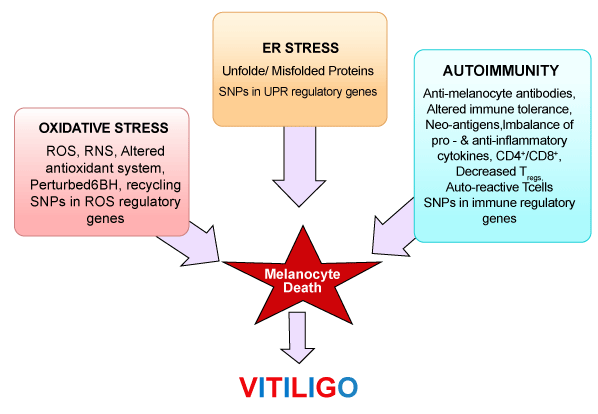
 |
| Figure 2:Overview of ER Stress Signaling Pathways: Activation of protective responses by UPR involves signal transduction through the IRE1, PERK and ATF pathways. PERK, IRE1, and ATF6 act as ER stress sensors by binding to the ER chaperone BiP, and by which they remain inactive under normal condition. Upon the accumulation of unfolded proteins, BiP preferentially binds to the unfolded proteins, which results in the release of PERK, IRE1, and ATF6. IRE1, once released from BiP, induces XBP1 by promoting the splicing of its mRNA. sXBP1 regulates chaperone induction and ERAD in response to ER stress. IRE1 also activates JNK which leads to cytochrome C release from mitochondria and activation of effector caspases leading to apoptosis. The released PERK phosphorylates eIF2α to suppress the overall transcription of mRNAs while selectively enhances the transcription of genes implicated in UPR such as the ATF4 mRNA. ATF4 thus formed initiates the transcription of UPR target genes like CHOP which represses antiapoptotic BCL2 proteins and activated proapototic Bax/Bak leading to apoptosis. The release of ATF6 from BiP results in the translocation of ATF6 to the Golgi apparatus, where ATF6 is cleaved and then translocates into the nucleus, and initiates the transcription of target genes. |